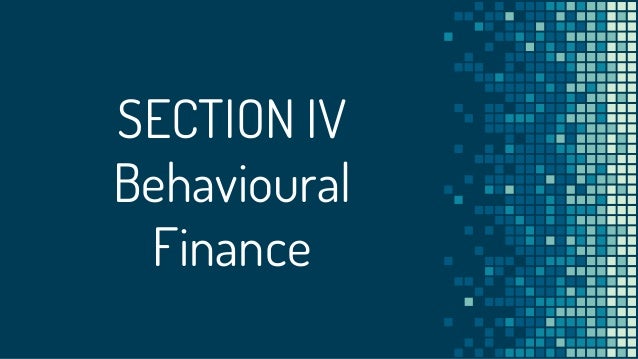
Behavioural Finance - CHAPTER 17 – Are Two Heads Better Than One | CMT Level 3 | Chartered Market Technician | Professional Training Academy
- 2. CHAPTER 17 Are Two Heads Better Than One?
- 3. Introduction ▪ Three possible means for reducing group biases ▪ Psychologists have documented that group decisions are often among the worst decisions made. We explore why groups are prone to make mistakes, and offer some solutions for mitigating these errors. ▪ Psychologists have documented that group decisions are often among the worst decisions made. ▪ The eternal hope is that groups come together, exchange ideas, and reach sensible conclusions. The reality of group behavior is frequently very different Psychologists have documented that, on average, groups are more likely to amplify rather than alleviate decision-making biases. ▪ Groups tend to reduce the variance of opinions, and lead members to have more confidence in their decisions after group discussions (without improving accuracy). They also tend to be very bad at uncovering hidden information. Indeed, members of groups frequently enjoy enhanced competency and credibility in the eyes of their peers if they provide information that agrees with the group view. 3
- 4. Introduction ▪ Groups also have a tendency to suffer cascades. Under cascades members abandon their individual information, choosing to agree with others because they think they know more. ▪ Groups are also at risk of suffering polarization and possibly groupthink. Polarization occurs when members of a group end up in a more extreme position in line with their original beliefs after discussion with the group. ▪ Groupthink is an extreme version of polarization leading to all sorts of problems. ▪ Beating the biases of group behaviour is every bit as difficult as overcoming individual biases. However, secret ballots may help to reduce social pressures to conform. ▪ The use of devil’s advocates may help (but they must believe the case they are arguing, and run the risk of being ostracized). Having respect for the other group members can help, but we all know how difficult that can be! 4
- 5. Introduction ▪ James Surowiecki (2004) has recently published a book entitled The Wisdom of Crowds. The book purports to show that ―the many are smarter than the few. ▪ A statistical group effectively involves asking a large number of people what they think the answer is and taking the mean. Such groups have a good track record when it comes to forecasting. ▪ Statistical group to be a useful device, three conditions must be met: ▪ 1. People must be unaffected by others’ decisions (effectively their errors must be uncorrelated). ▪ 2. The probability of being correct must be independent of the probability of everyone else being correct. ▪ 3. The participants must be unaffected by their own vote possibly being decisive. 5
- 6. Introduction Groupthink is often characterized by: ▪ A tendency to examine too few alternatives ▪ A lack of critical assessment of each other’s ideas ▪ A high degree of selectivity in information gathering ▪ A lack of contingency plans ▪ Rationalizing poor decisions ▪ An illusion of invulnerability and shared morality by the group ▪ Suppressing true feelings and beliefs ▪ Maintaining an illusion of unanimity ▪ Appointing mind guards (essentially information sentinels) to protect the group from negative information. 6
- 7. Beating the Biases ▪ Secret Ballots ▪ The use of secret ballots obviously reduces the risk of group members coming under social pressure. ▪ Devil’s Advocates ▪ Selecting prickly disagreeable individuals with a strong contrarian view and the ability and desire to argue on almost anything would be perfect. But such individuals are hard to find, and don‘t fit easily into most corporate cultures. ▪ Respect for Other Group Members ▪ Other factor that can help to reduce the dangers of group decisions is when the group members are acknowledged to be experts in their field, and hence disparate viewpoints are easier to deal with and unshared information may be easier to uncover. 7
- 8. Points to be Remember Psychologists have documented that group decisions are often among the worst decisions made. Groups are more likely to amplify rather than alleviate decision-making biases. Risk of suffering polarization and possibly groupthink. Groups also have a tendency to suffer cascades. Under cascades members abandon their individual information Groups tend to reduce the variance of opinions, and lead members to have more confidence in their decisions after group discussions (without improving accuracy).
- 9. Points to be Remember To Reduce Group Behavior Biasness secret ballots may help to reduce social pressures to conform. Devils Advocate – Heard views of Contrarian‘s Group members are experts of their fields
- 10. Thanks
